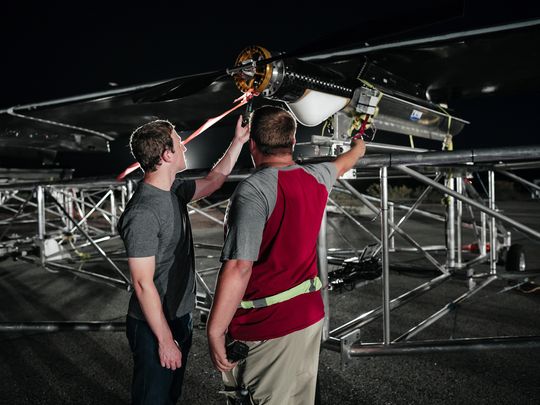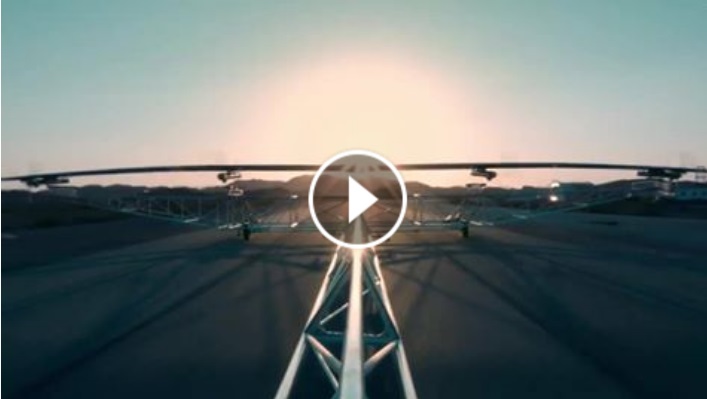Facebook has completed the first successful test flight of Aquil. Aquila is the Latin and Romance languages word for eagle. Facebook has revealed its first full-scale drone, which it plans to use to provide internet access in remote parts of the world.
Aquila, with the wingspan of a Boeing 737, remained aloft at low altitudes for 96 minutes, more than three times longer than Facebook originally planned. Facebook had been testing a much smaller scale version of Aquila for several months, but this flight a month ago was the first true test of the aircraft.
Aquila is the flying drone Zuckerberg and company are designing to provide Internet access in remote parts of the world. It’s made of carbon fiber, and it tops the wingspan of a 737. As the truck reached full speed, the drone’s on-board autopilot computer clipped the straps that held the aircraft to the dolly, and Aquila rose into the sky.
- Advertisement -
Guiding itself via that same computer, the drone flew for a good 96 minutes in the restricted airspace of the Yuma Proving Ground before landing in the desert on its styrofoam skids—Aquila’s first successful flight.

The drone “Aquila” is part of Internet.org, Facebook’s plan to extend Web access to what it estimates are 1.1 billion to 2.8 billion people without it today.
Separately, Facebook a year ago launched Internet.org, an initiative to provide access to the two-thirds of the world without a reliable connection. The project, which partners with local mobile carriers to offer free internet access on basic smartphones across Asia, Africa and Latin America.
The Aquila is one of Facebook’s most ambitious efforts. It weighs one third as much as a car. At cruising altitude, it consumes 5,000 watts of power, the equivalent of three hair dryers. During the test flight, Facebook says it gathered vital information on the design and operation of the aircraft, from its aerodynamic handling to its structural viability.
Note that Alphabet (Google) has been working on a similar project since 2013. However, the firm’s Project Loon uses floating helium balloons to deliver internet connectivity rather than laser beams and drones.








